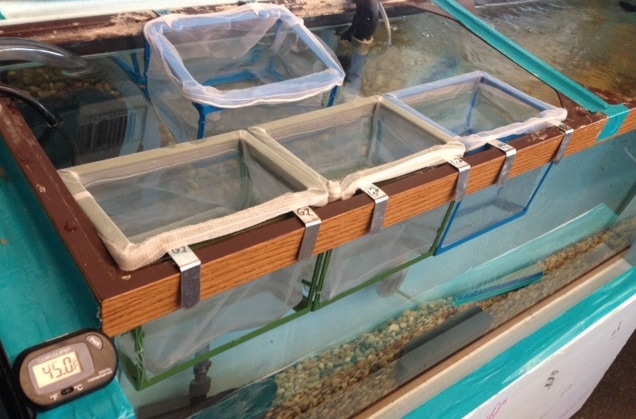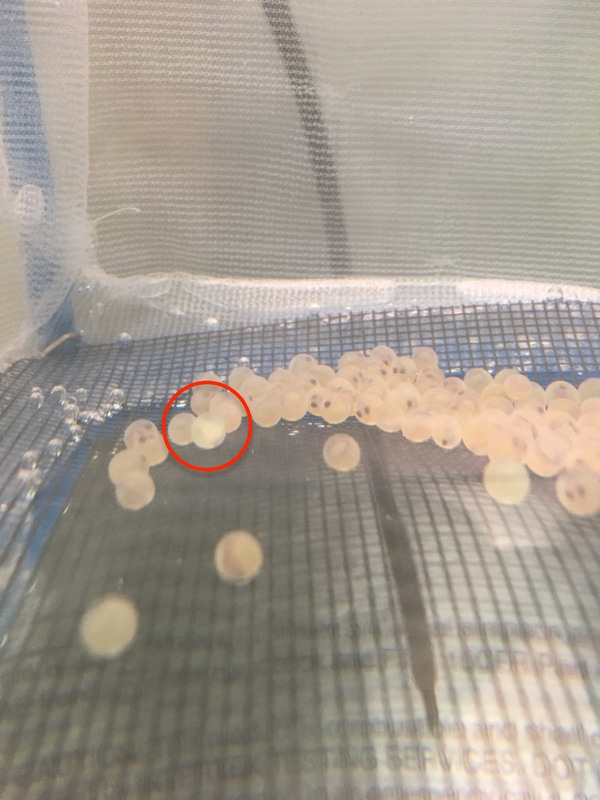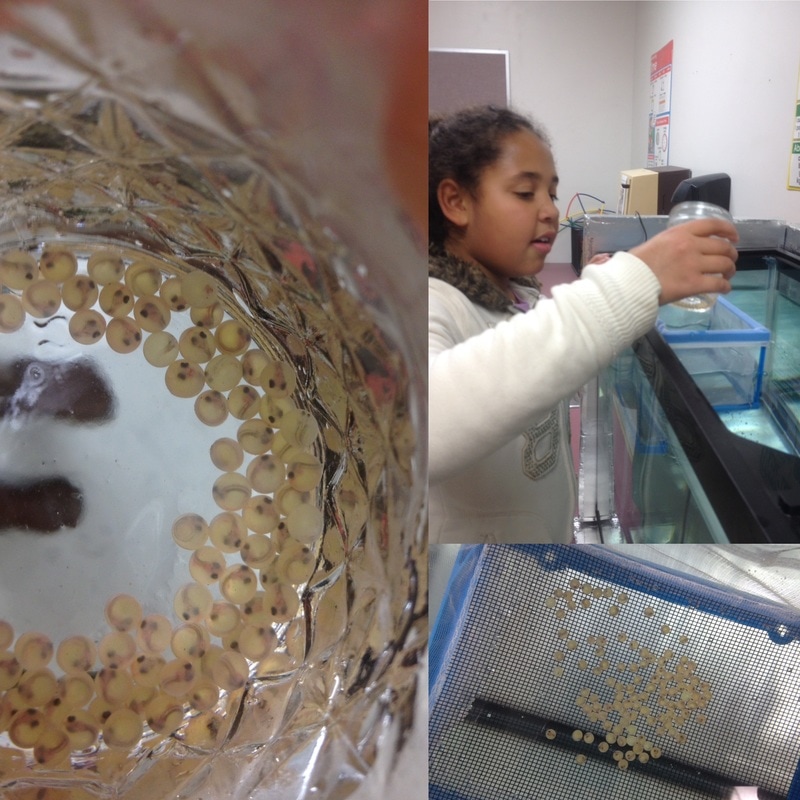|
It's happening! Yesterday several schools received their eggs. Dozens more will be getting them tomorrow, so there's no turning back. Here's a picture of the tank at Poultney High School, perfectly set up and at the right temperature (45 degrees) but lacking living matter, those precious eggs. Especially for those of you who are new to TIC, here are some final instructions.
Bob Wible and I had essentially similar opinions: Keep an eye on it. It might be dying, but the evidence of that isn't yet conclusive. (See page 26 of the manual.)
If you don't know when your eggs will arrive, contact your community partner or regional TIC liaison ASAP. I don't know who all the community partners are, but here's a list, by county, of TIC liaisons:
Above, four nice "opening day" photos from Browns River Middle School. Equipment failures and routine maintenance While at a family gathering in Bridport on New Year's Day, I got a concerning e-mail from Archie Clark of Benson Village School. His one-year-old Fluval filter, which performed flawlessly last year and was running fine before the break, wasn't working when he went in to check it. On Monday, through e-mails and phone calls, we engaged in collaborative trouble-shooting to no avail. So on Tuesday, I visited his class to get a better sense of the problem and its possible causes. Long story short, after a lengthy call to the manufacturer on Tuesday, I decided the our only choice was for me to run into Rutland to get a replacement filter--fortunately they had one, and it was even on sale! This morning, Archie reprted that everything was A-OK. Yesterday, I also learned of a central Vermont school that had its chiller die recently. Why do I bring this up? The Fluval customer support representative peppered me with questions about whether Archie had been following the routine maintenance procedures detailed in the manual. I didn't know what Archie had been doing; but I suspect that, as long as their equipment seems to be working fine, many teachers don't think to check the manuals to see what the "best practices" of routine maintenance are. We can't say whether these two breakdows would have been prevented by maintenance, but these experiences can serve as a reminder that there is some minimal maintenance that we ought to be doing periodically. I don't want your filter or chiller to be the next to go! Good luck!!
0 Comments
Leave a Reply. |
Joe Mark, Lead Facilitator, Vermont Trout in the Classroom
In June 2012, I retired after 40 years in higher education, having spent the last 32 years of my career as dean at Castleton. One of the first things I volunteered to do in retirement was to work with Jim Mirenda to help the Dorset School, where his kids and my Vermont grandkids attend, start a TIC program. Gradually that commitment grew into my current role, which is both demanding and highly rewarding. Archives
June 2017
Categories |




 RSS Feed
RSS Feed
